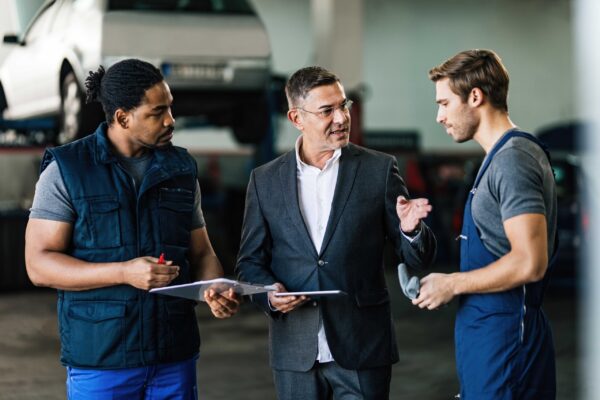The “Costco Effect” – And Why Dealers Should Worry

Article Highlights:
- The average buyer visits just 1.6 auto dealerships while car shopping.
- Frictionless is about the efficient engagement.
A story aired on NBC News not long ago that confirmed what most dealers have observed over the past several years about car shoppers. But the story also offered a new insight into the way consumer behavior around car shopping and purchasing has changed
Citing a recent study of worldwide consumer buying patterns by McKinsey and Co., NBC concluded that the average buyer “visits just 1.6 auto dealerships while car shopping, down from 10 years ago when buyers visited an average of five dealerships.”
Dealers generally have been aware of that shift for some time now, as consumers access more and more information online and through third-party sources. Nonetheless, the business challenge this shift presents is stark: Over the past 10 years, dealerships that used to compete to be one of five dealerships selected for a visit now are aiming to be the one dealership that a consumer visits.
But there’s more behind that challenge than the digital world. There’s also the insight that consumers are looking for ways to shop and purchase on their own terms.
Here’s how NBC framed the dilemma: “[When this consumer] decided she wanted to buy a new car, she was dreading running around and visiting car dealers. So instead, she joined the growing numbers of car buyers making their purchase through a third-party referral. In her case, it was Costco.”
As it turned out, the consumer selected a vehicle from the Costco website. Costco, in turn, put her in touch with a local dealer who delivered the vehicle at a pre-set price. Within 48 hours, she had her new car.
And price wasn’t the overriding factor in the deal.
As the consumer put it: “In the past I would hop from dealership to dealership, taking several weekends, combing the lots trying to get a deal,” she said, “But this was so much easier.”
The Costco Auto Program anticipates selling some 375,000 new vehicles this year. Consumers using that service are looking for a good deal, to be sure, but equally important is an avoidance of “haggling” and “wasted time.” In other words, they want to minimize the “friction” (real or perceived) that’s often involved in working with dealerships in shopping, buying, and servicing a vehicle.
Friction in the car buying process is any obstacle that interrupts progress or that becomes a brief barrier in taking the next steps in financing, purchasing, or servicing a vehicle. A “frictionless” customer experience with the dealership smoothly facilitates moving through the entire process—without speed bumps that slow or halt the progress.
Frictionless is about the efficient engagement (the return on time and attention) for both the consumer and the dealership and about eliminating the disengagement or downtime in the process.
One way to measure that level of disengagement is through customer satisfaction. J.D. Power and Associates’ research indicates that streamlining and shortening the time spent in the buying process, as well as providing consumers with clarity at every step in the process, can increase customer satisfaction by some 15 percent.
Two conclusions come to mind, then, from the NBC story for those of us in the automotive industry.
- With so much of the car shopping and dealership selection process occurring online before the consumer walks into a showroom, a dealership’s capacity and flexibility to compete effectively through digital channels and deliver the right customer experience across the entire customer journey—without friction—is looming ever more important.
- Once consumers are inside the dealership’s four walls, a dealer’s capacity to engineer the processes and touch points that reduce friction in the most frequent interactions—the showroom and sales lot, F&I, and service—will pay the biggest dividends in customer satisfaction.
What consumers expect from dealerships will continue to evolve, influenced heavily by non-automotive retailers. Along with that, consumers will continue to face time pressures in their personal and professional lives.
As these trends collide, aligning dealership processes in ways that create a “frictionless” customer journey will go a long way to help a dealership stand out as that one store where the retail experience is worth having.
The McKinsey report concludes that those auto dealers who can “change with their customers will succeed.” While that has always been true, the way customers are changing today is both more rapid and more uncompromising.
And leaves no room for friction.
To learn how Reynolds is helping dealers change the automotive retail experience, please visit www.reyrey.com/rms.
Related Articles:

Harvesting Profits: Autumn Opportunities in Your Service Drive
As leaves begin to fall and jack-o’-lanterns light up porches, your service drive faces its own set of tricks and treats.

A Seamless Connection between Sales and Service
By fostering a seamless connection between these sales and service, you can create a holistic customer experience that not only drives sales but also ensures…

Tips You Can Learn From Free Agency To Help With Customer Retention
When it’s the offseason for a sports league, it can be a dull time for fans. However, free agency can add some excitement, as it’s…

Caddy Credentials: 3 Traits to Look for in a Supportive Partner
There are a lot of factors that go into making a top notch DMS partner. A lot of similarities can be drawn to another type…















